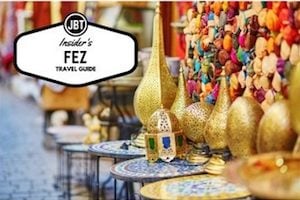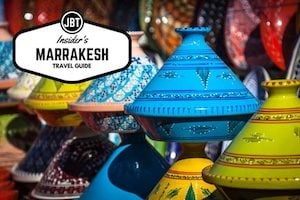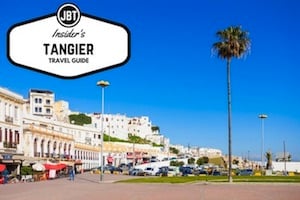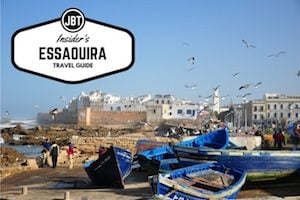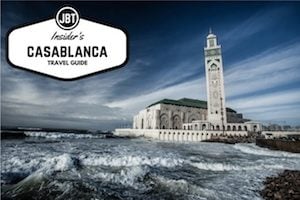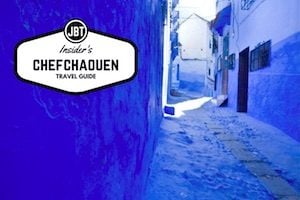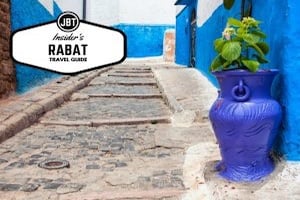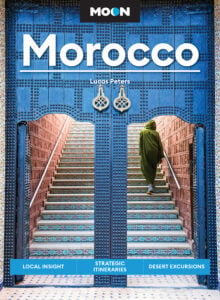
Historically, Morocco has strived to be a place of acceptance. Several different cultures and religions have inhabited its cities and towns throughout the centuries. Today, the majority of its population is Muslim but it is not hard to find a wide array of remnants of the country’s Jewish heritage throughout its many cities. Most Jews immigrated to Morocco in the 15th century following the Spanish Reconquista which pushed out the entire Jewish population from the Iberian Peninsula. They established themselves in mellahs (or Jewish Quarters), that were often found in a corner of the city fortified by Kasbah walls for protection. These mellahs became a city within a city for the Jews with their own synagogues, fountains, and markets lining narrow streets and alleyways.
Several Jewish Quarters still survive today with their synagogues and Jewish cemeteries and can easily be found within large cities such as Marrakech and Fez. But a trip off the beaten path can also be extremely rewarding. Towns such as Sefrou and Chefchaouen have beautifully preserved unique mellahs that can easily be explored from one of the main Moroccan cities.
Fez
The city of Fez is where the Jewish presence was most felt historically in Morocco. After its founding in the 8th Century, the city began expanding both physically and culturally. In 808 a large number of Jews were admitted into Fez from Andalucia, thus beginning a long history of Jewish presence in Morocco’s former capital. At first, the Jewish population was extremely well received by the local community as Jews contributed greatly with instrumental skills and large sums of taxes. During this “golden age” of Jewish life in Morocco that lasted almost three centuries, many schools and religious buildings were built. However, very few of these are still standing today. After the 14th century, the fate of the Jews became ever more uncertain as cultural and religious tolerance waned. Over the years, synagogues were destroyed, schools were abandoned, and the Jewish population was expelled from the city.
Today, a small number of Jewish inhabitants call Fez home. The Jewish Quarter is undergoing a restoration process with the help of UNESCO funds. Among the beautiful buildings featuring a unique architecture style in the mellah, you will be able find a gold souq and charming antique furniture shops where you can shop for unusual and unique pieces. To the southwest of the mellah, an ancient cemetery holds the whitewashed tombs of rabbis and religious martyrs. At the end of this cemetery, on the bottom of a hill, stands Habarim Synagogue. No longer in use for religious practices, it now houses a museum showcasing a mishmash of articles and photos left behind by the Jews that fled Fez.
Sefrou
Slightly south of Fez, one could very well stumble upon the quiet city of Sefrou, also known as “Little Jerusalem”. This small town stands off the beaten path in the Middle Atlas Mountains at an altitude of 1000 meters and has had a rich heritage as a major stop for merchants from all over the world. For this reason, the town developed as a thriving melting pot of cultures with Jewish settlers present since the 13th century.
Upon independence from the French, Sefrou was the Moroccan city with the largest proportion of Jewish population who lived almost exclusively in the mellah, an area which takes up almost half of the city. Today, you can enter the Jewish Quarter by crossing the River Aggai and wander through narrow alleys and passageways to discover a large school, a well-preserved synagogue, and a cemetery holding the tombs of important saints, merchants, and flood victims.
Marrakech
The bustling city of Marrakech is also a great place to unravel the history of Jewish life in Morocco. Although most Jewish families abandoned the mellah in the mid-20th century, there is still a small Jewish population occupying the quarter and many buildings have been well preserved.
To discover them, head to the east side of the medina and look for the Place des Flerblantiers. It is through here that you will be able to enter the mellah of Marrakech, an area best known today for its remarkably tall mudbrick buildings. It is advisable to find a guide to take you through the winding alleyways of the medina so you are sure to find the wide array of synagogues and the blindingly white tombs of the Jewish cemetery. If you prefer to venture on your own, keep to the main passageways of the souk and you will be able to find the Jewish Cemetery as well as two main synagogues: Lazama and El Fasiines.
Essoauira
A short three-hour drive from Marrakech will take you into the coastal town of Essoauira, where you will be able to discover another one of Morocco’s mellahs right by the sea. This ancient fortified town seems at once familiar and exotic as a European-inspired harbor blends with a deeply Moroccan medina. As a relevant trading point, in the 18th century Jews were encouraged to settle here by Sultan Ben Abdellah al-Khatib to engage in merchant activity with the Europeans.
Thus, at one point, Jews omade up 40% of the population of Essoauira and though the vast majority of these have since left the country, they left behind a number of synagogues and a cemetery. Unfortunately, many of these synagogues have been destroyed or simply abandoned over the years and are not in conditions to be visited. The Jewish cemetery, however, has been well preserved and deserves a look.
Chefchaouen
Finally, just a couple of hours from Tangier, you’ll arrive into the Rif Mountains leading to Chefchaouen, a charming and truly unique town. Its Jewish heritage is visible in one of its most distinctive characteristics: the picturesque blue-rinsed buildings that line the city’s narrow streets.
Chefchaouen was established in the 15th century after Jews and Moors fled there following the Spanish Reconquista. Numerous Jewish families thrived in this picturesque blue town for centuries until Morocco gained independence and most Jews left for Israel. The blue buildings are a remnant of a Jewish religious tradition of weaving prayer shawls with tekhelel (an ancient natural blue dye) to remind people of the presence of God. In Chefchaouen, this practice was translated into painting the buildings blue for the same purpose. Interestingly enough, this tradition has continued to this day and the local villagers repaint the town every year despite the fact that very few Jews still live there.
Jewish Populations in Morocco Today
Today, most Moroccan Jews live in Casablanca. It is here that Jewish heritage has been best preserved and, more importantly, is still thriving today. Presently, there are roughly 5,000 Jews living in Casablanca and the city houses over 30 synagogues as well as relevant monuments, communal spaces, cemeteries, shrines and kosher restaurants. Casablanca’s mellah is relatively recent by Moroccan standards as it was only established less than a century ago, but it has played an important role in Jewish history in Morocco in the 20th century. A tour through this modern Jewish Quarter will allow you to discover Temple Beth-El which seats over 500 worshippers, an old food market selling kosher products, a Jewish cemetery, and a museum dedicated to Moroccan Judaism in Casablanca.
Jewish heritage is very much alive in Morocco. Whether it is in the blue-rinsed houses of Chefchaouen, the tall mudbrick buildings of Marrakech, the Habarim Synagogue in Fez, or the thriving mellah in Casablanca, the importance of the Jewish presence in Morocco’s history is grabbing and an interesting focal point for any traveler. And experiencing it first-hand is a must!
Exploring Jewish Morocco
If you’d like to explore Morocco and truly get off the beaten path (while still enjoying some of the country’s highlights), please contact us to begin chatting with one of our Morocco tour experts. We have an array of superb itineraries that we customize to fit your travel dates and style.
Other Jewish-Related Topics
Jewish Morocco Discovery
History of Jewish Berbers
Ancient Jewish Sights in Morocco
Morocco Jewish Museum
Co-Author:
 This article was co-authored with Maria Inês Pinto, a young Portuguese freelancer born with a passion for writing and travel.She has spent her life hopping around different countries, having lived in Canada, the US, India and Ireland. Now residing in Portugal, she is planning to move to Mozambique soon to pursue her third passion: humanitarian work. In her free time, she travels and writes about her adventures.
This article was co-authored with Maria Inês Pinto, a young Portuguese freelancer born with a passion for writing and travel.She has spent her life hopping around different countries, having lived in Canada, the US, India and Ireland. Now residing in Portugal, she is planning to move to Mozambique soon to pursue her third passion: humanitarian work. In her free time, she travels and writes about her adventures.
Useful Resources:
http://www.jewishvirtuallibrary.org/jsource/vjw/Fez.html
http://riadzany.blogspot.com/2013/03/antique-shopping-in-mellah-of-fez-medina.html
http://www.morocco.com/blog/the-mellah-of-marrakech

